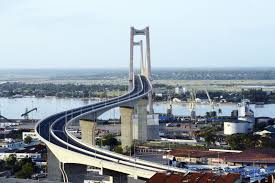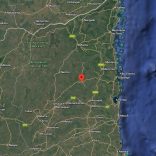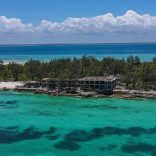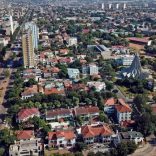Mozambique: Local forces kill five insurgents in confronts
Chinese-built bridge over Maputo Bay changes the lives of thousands – report

Photo: Lusa
The lives of Katembe residents, on the southern shore of Maputo Bay, have changed “for the better”, they say, since the opening three months ago of the new bridge connecting them to the capital, a US$785 million infrastructure project financed by China.
Salomão Elias, 64, has been making the Maputo-Katembe crossing for more than a decade to sell herbs grown in his garden, the only source of income for his family of five.
His destination is always the central market in the Mozambican capital, where he meets his clientele – a destination not easy to reach. The crossing was always an ordeal, with the ferryboat, which would never leave without being full, sometimes taking two hours to make the 1.2 kilometre crossing.
Elias would have to wake up at 5:00 a.m. so he could get to central Maputo by 9:00 a.m., he recalls.
Today, with the new bridge, the crossing takes only 10 minutes. And it’s much safer than the ferry, where passengers had to share space with vehicles and various types of merchandise.
Not far from Salomão Elias’ market garden, Rosita José, a grade 10 student is preparing, “without too much haste”, to go and renew her enrolment in the Josina Machel School, in Maputo.
Time is not of such concern now, because you know that “the crossing is much more flexible”.
“The bridge was a good development for us. The ferry was more expensive, and sometimes we could not cross because of bad weather,” Rosita says. Rosita was even forced to miss the last classes of night school, because the ferryboat did not run after 10:00 p.m..
“A lot of people can do their jobs without problems now,” she adds.
But if, for most people, the bridge is a source of satisfaction, some people see it as a problem.
For example, at the sea crossing terminal on the Maputo side, João Mafunga, the manager of one of the small-boat ferry companies that still ply the crossing, says the new bridge over the bay of Maputo has caused a crisis.
The queue of those who remain faithful to crossing by sea and line up to buy tickets is very short.
“The main ferry ended up stopping. We [small businesses with crossing vessels] are trying to continue, but traffic is very low,” he complains.
Mafunga adds that his company, which operates three vessels, has laid off staff because of low demand.
“It’s been a battle,” he adds.
Another less-than-happy customer is peddler Carlos Salvador, who says the bridge should have markets to accommodate those who plied their trade with the ferry passengers – but who today cannot get near the bridge or get access to pedestrians.
Salvador, who used to do business at the ferryboat terminal on the Maputo side but has now moved to Katembe, says: “The bridge is welcome, but there is no business for us anymore. There are no markets or stalls. Now people just come along and, because the transport is so easy, go and shop in the city.”
But the bridge has brought the prospect of development to the south bank.
“The bridge has brought us greater prestige. Katembe is turning into a city. Those of us who have known this place for years can clearly see the change,” Salomão Elias – who has lived his entire life on the bay’s southern shore – says.
It was China that embraced the task. Now, between Maputo and Katembe, stands the largest suspension bridge in Africa, the most expensive state infrastructure since Mozambique’s independence – an affirmation of Chinese investment in the country, financed and built as a “turnkey” enterprise.
With a span of 700 metres and two approach ramps just over two kilometres long, the bridge’s construction involved 3,800 local and 450 Chinese workers, as well as 50 engineers and consultants from countries such as Germany, England, Russia and Greece.
The US$785 million (about € 687 million) in funding China brought to bear – following on the heels of other large-scale developments in the country – confirms its central role as Mozambique’s largest post-independence infrastructure financier.
Among other works also built with Chinese money, the country now has a new headquarters for the Assembly of the Republic, Attorney General’s Office, Administrative Court, various ministries and the Zimpeto National Stadium.












Leave a Reply
Be the First to Comment!
You must be logged in to post a comment.
You must be logged in to post a comment.